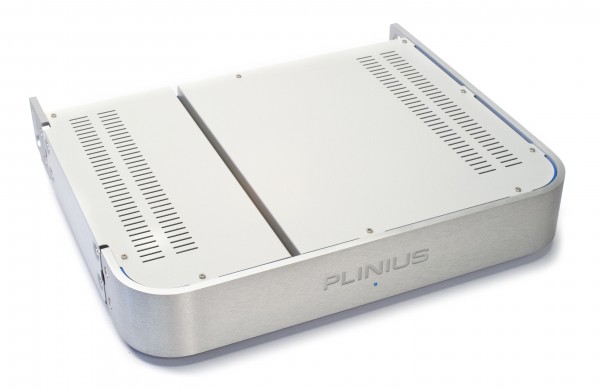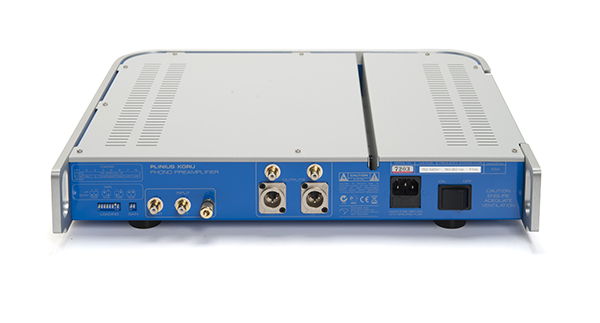Great Solid State Phono – The Plinius Koru…

I fell in love with New Zealand after visiting the country a few years back. The people are some of the friendliest I’ve encountered, the diverse landscape is beautiful beyond expectation, and the local wine is dazzling. New Zealand is also home to the Plinius headquarters, located in Christchurch, the largest city on the South Island.
Aside from the Koru phonostage, the now-retired 8100 and an 8150 integrated amps were the only Plinius products I’d spent much time with. I remain impressed with the power and finesse that the Plinius gear provides. Although these amps are fully solid state and display tuneful bass punch, their slightly warm sound reminds me of tube equipment. Two close friends still use those very units as the hubs in their respective systems, and problems have never arisen despite daily use. Not too many companies commit to a 5-year owner warranty like Plinius’s—which speaks volumes of the confidence that the company has in its engineering ability and the build quality of its products. Based on my personal experience, I have no doubt that the Koru lives up to that standard.
Red or White?
As with Plinius’s integrated amps, the new Koru phonostage is solid state and a tribute to the legacy of Plinius phonostages, which began in the 1980s. Physically, the Koru maintains the beautiful simplicity of its predecessors but with modern improvements. Rather than a traditional flat faceplate, the Koru uses a seamless piece of thick, brushed aluminum with curved corners that wraps around the front from either side, giving the unit a sleek look that matches the current Plinius lineup. While our review unit sports a silver faceplate, owners can also choose anodized black. Other than the Plinuis logo milled out of the front and a tiny blue LED power indicator, the front is bare.
Popping the Cork and Letting It Breathe
At 3.5 inches high, 17.75 inches wide, and 15.75 inches deep, and weighing in at 12 pounds, the Koru slides easily into most audio racks. And because the side panels terminate at the back in a looped metal handle, the unit is easy to move without scratching it or even getting fingerprints on it that would taint its simple beauty.
An above view of the Koru with the hood up hints at the Plinius design approach. A division in the top panel indicates a two-chassis internal structure. The power section is separated from the delicate phono section to reduce potential interference between the two sides, which results is very quiet operation.
Typical of phonostages, the rear panel is simple and straightforward: a hefty power switch, grounding connector, and a set of gold-plated RCA inputs. Outputs include RCA and balanced connections.
The Koru also offers a wide variety of controls to optimize it for your turntable and cartridge. Using DIP switches on the back panel, you can set cartridge load to one of eight steps from 22 to 47K ohms and gain settings from 50 to 66 dB. With all this versatility, any cartridge should find a good match with the Koru, and it’s fun to experiment with the various settings.
Plinius recommends a full 24-hour warm-up for the Koru to sound its best, leaving it in standby mode all the time so it remains at the ready, and giving it plenty of space to remain cool. Our test sample remains on an open-air shelf and has been consistently powered up since its arrival a few weeks ago. Surprisingly, even after all that time, the Koru seems barely warm.
Taste Test
When using a piece of new equipment, the first few songs usually prove revelatory. Compared to my daily reference system, the Koru sounds neutral and organic, with perhaps a touch of forgiving warmth. Vinyl has its inherent snaps and pops, but through the Koru, even older records with many hours of play on them sound their best. The Koru reveals all that my old pressing of K.D. Lang’s Ingénue has to offer. The powerful highs of “Wash Me Clean” are free from harsh edges; grace, nuance and delicacy are all that remain.
The new pressing of Elliott Smith’s Roman Candle sounds extremely convincing through the Koru, both in terms of the intricate instrumentation and the melancholy vocals. Similarly, on Ben Harper’s “Alone,” the snare drum and triangle strikes remain easy to discern and offer very convincing presence and decay. Plinius manages to capture the perfect balance between neutral sonics and reigned-in euphony. The combination is beguiling.
Portishead’s Live in New York via the Koru illustrates the Koru’s ability to recreate live music. Cheers and applause come through clearly in the rear soundstage to contrast the upfront vocals, which extend beyond the plane of the loudspeakers. Similarly, through the Plinius, Ray LaMontagne’s Till the Sun Turns Black displays details in the left and right extremes of the perceived audio picture, with the piano notes floating in from the periphery creating an immersive experience for the listener.
Jasha Heifetz’s interpretation of Beethoven’s Violin Sonata No. 9 in A proves revelatory. It appears that the engineer of this older (but very good) RCA Red Seal recording placed the microphones extremely close to the violin. I’m surprised Heifetz had enough room left to wield the bow! The Koru creates a very plausible illusion of standing right next to Heifetz during the recording session. The combination of the recording, this pressing, and the Koru’s delivery extracts every nuanced stroke of the bow, with realistic detail retrieval and overall presentation, including a degree of inherent stridency from the violin, which the phonostage simultaneously tames a bit. That’s not to imply that the Koru truncates higher frequencies, or any other frequencies for that matter; instead, it manages to give the best of what it’s given back to the listener. Ultimately, the Koru is like a front-row seat, without somebody in the back row disturbing the concert with the occasional cough.
It’s a challenge to find the Koru’s shortcomings, especially at this price point. If anything, I will say that, while the bass delivered is very tuneful, on some tracks there seems to be a bit of bass accentuation—a slight bloat compared to the low-end portrayal I’m accustomed to. Experimenting with the various power cords and interconnects I have on hand, I’m able to fairly easily tweak the bass response back to neutral—a reminder of how important system synergy can be, just like pairing a great wine with the right food. The Koru is a treat on its own, but complementary peripheral pairings will reward you with even more wonderful sound.
Another Great Vintage?
The biggest question is whether or not the $3,900 that the Koru will cost you is commensurate with the quality you expect at that price point. It is guaranteed to provide years of reliable playback (so says a decade-long warranty). For those seeking a bit of purchase justification, think of it this way: that cost represents about $33 dollars a month for 10 years and what you get is worry-free performance for the duration—and beyond. I’m just sayin‘…
Is the Koru right for you? For those seeking a great phonostage as a partner for their turntable, do yourself a favor and put the Plinius Koru on your audition list. It offers fantastic sound, durablility, and a great brand behind it—now just to find a wine to pair with it.
-Rob Johnson
 Additional Listening (and a few more pairings)
Additional Listening (and a few more pairings)
By Jeff Dorgay
Running the Koru through its paces with a bit wider gamut of phono cartridges still proves it more than worthy of the price asked. With such a void in phonostages between about $2,500 and $12,000, the Koru is the ticket for the analog enthusiast who wants a substantial helping of what world-class units offer but who only has one turntable and cartridge.
Like the rest of the Plinius gear we’ve sampled, the Koru offers understated elegance in terms of look and sound. I find it particularly suited to cartridges with outputs around 0.5 mV. Wonderful synergy is achieved with the $2,200 Ortofon Cadenza Bronze, $3,000 Grado Statement 1, and $3,000 Lyra Kleos. Thanks to its 22- and 47-ohm loading settings, the Koru is a killer match with Rega’s Apheta MC cartridge.
Those wanting vacuum-tube romance will be somewhat disappointed with the Koru; however, those after a more accurate sound and low background noise will be delighted. I’m highly impressed with how quiet the Koru is, as well with how quickly it responds to musical transients. Plus, you’ll never have to screw around with tube matching/rolling.
The more time I spend in the analog game, the more I appreciate a great solid-state phonostage that you can set, forget and enjoy. The Plinius’ Koru is one of the best one I’ve sampled at this price.
Plinius Koru Phonostage
MSRP: $3,900
PERIPHERALS
Digital Source
JRiver Media Center 15, Light Harmonic DaVinci DAC, Audio Research CD3 Mk2
Analog Source
SME 10 with 10 tonearm and Dynavector 17D3 cartridge
Preamplifer
Coffman Labs G1-A
Amplifier
Mark Levinson No. 335
Cables
Jena Labs interconnects, phono interface, USB cable, and Twin 15 speaker cable
Power
Running Springs Audio Haley, RSA/Cardas Mongoose and Golden power cords, Shunyata Python Alpha power cord
Accessories
ASC Tube Traps, Cathedral Sound room-dampening panels, Mapleshade Samson racks, Coffman Labs footers



